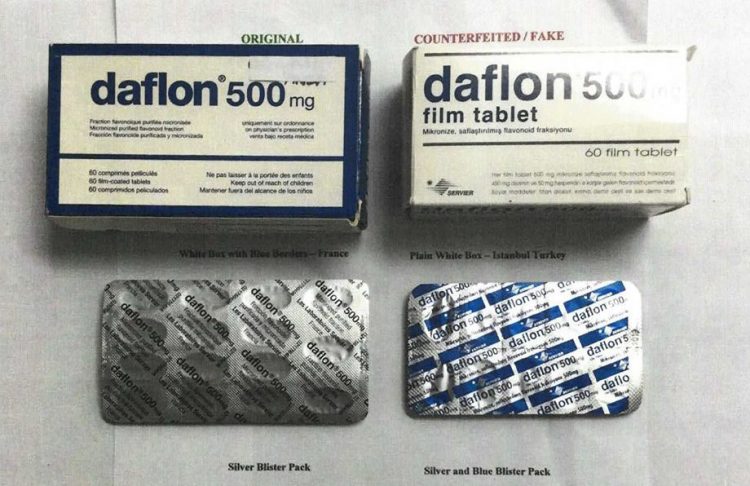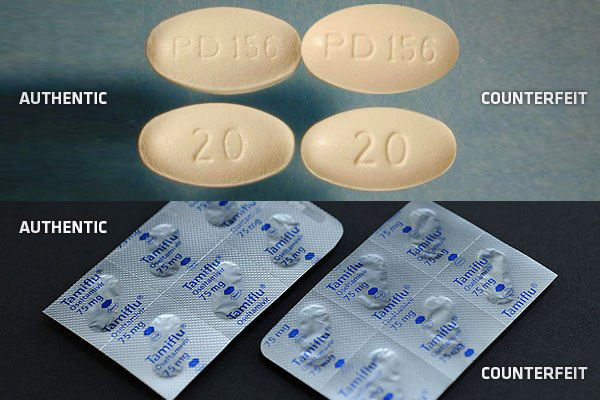Statistics generated by the World Health Organization (WHO) suggest that last week’s revelation by the local Government Analyst-Food and Drug Department (GA-FDD) regarding the discovery that three new fake drugs have appeared on the market and moreover that they have been unearthed in local pharmacies may well be just the tip of the iceberg.
Less than two years ago the WHO disclosed that estimates generated by its own research pointed to the likelihood that as much as 10% of medicines and medical products used in low- and middle-income countries are either falsified or substandard and that these kill hundreds of thousands of patients and result in the waste of billions of dollars each year.
And while the research provides no indication of how bad the problem may be in Guyana, the GA-FDD has told this newspaper repeatedly that the main problem is that its existing infrastructure is not nearly as sophisticated as it ought to be and that apart from its limited capability to detect fake drugs it is altogether unable to pronounce on the likely scale of the problem.

Part of the problem here, the GA-FDD has said, reposes in its limited capability to track the importation of drugs, both through the country’s official ports of entry and across land borders which the country shares with two large South American neighbours.
Guyana’s particular vulnerability to fake drugs reposes largely in a combination of its particular geographic location and its weak border defences. Latin America is believed to rank higher than most other regions in terms of the number of counterfeit drug “incidents,” according to reports from professional associations like the Pharmaceutical Security Institute (PSI), a nonprofit group made up of the world’s leading pharmaceutical companies. Fake medications operations have been identified in Argentina, Mexico, Brazil, Panama, Peru, Ecuador, Bolivia, Paraguay, Uruguay, Venezuela, Colombia, and Belize, all countries that are either in close proximity to Guyana or can access Guyana with relative ease. In Mexico alone, the fake drug market is believed to be upward of US$2 billion, while in the absence of reliable figures, the value of the fake drugs industry in Brazil, Guyana’s immediate neighbour, is believed to be at least as high.
The WHO reports that driven by demand, falsified or substandard medical products including antibiotics, cancer treatments and diabetes medication, make their way onto the market in countries around the globe, particularly targeting countries where port inspection facilities are weak and where, simultaneously, a proliferation of poverty-related illnesses mean that many patients are taking medicines that can neither treat nor prevent disease.
These days the reports received through the WHO’s own global surveillance programmes number in their thousands and in the absence of strong state-driven structures (as is the case in Guyana) the detection of fake drugs comes to official attention primarily through tip offs.
Weak detection mechanisms are almost certainly the biggest headache for countries like Guyana since a lack of adequate information on drug imports mean that the extent of the impact of fake drugs on the population as a whole is unknown. However, in March this year, the Guardian reported “a surge in counterfeit and poor quality medicines” that likely accounts for the lives of a quarter of a million children a year “thought to die after receiving shoddy or outright fake drugs intended to treat malaria and pneumonia alone.” More are thought to die from poor or counterfeit vaccines and antibiotics used to treat or prevent acute infections and diseases such as hepatitis, yellow fever and meningitis.
According to the Guardian article these deaths occur predominantly in countries “where a high demand for drugs combines with poor surveillance, quality control and regulations to make it easy for criminal gangs and cartels to infiltrate the market. Often they face only fines or minor sentences if caught.” Here in Guyana the GA-FDD has been known to come up against influential business interests as it seeks to keep fake drugs at bay.
The counterfeiters have cast their net far and wide embracing a range of drugs used for some of the most common diseases. Tests on drugs in the field, the Guardian says, have identified fake and ineffective copies of a vast range of drugs including antimalarials, antibiotics and cardiovascular and cancer medicines. “Many fakes originate in China and India and have been found to contain everything from printer ink and paint to arsenic. Lifestyle drugs, such as Viagra, dominate the market for counterfeit medicines,” the Guardian report says.
These days, poor countries like Guyana are challenged to detect what the Guardian describes as ‘criminal gangs” who offer for sale “poor-quality medicines that lack sufficient active ingredients to work properly, or fail to dissolve correctly when taken.” Beyond that the GA-FDD has, in the past, conceded the considerable likelihood that the local fake drugs ‘business’ may involve seemingly reputable businesses while sources in the medical field have told this newspaper that there is no reason why, like in other developing countries, well-placed officials in state agencies might not themselves be facilitating the circulation of fake drugs.






